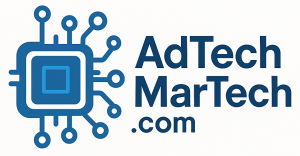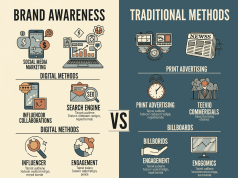Introduction
In recent years, programmatic advertising has transformed the digital marketing landscape. This automated, data-driven approach allows brands to purchase ad space in real-time, optimizing their ad spend. With its growth showing no signs of slowing down, brands must grasp the intricacies of programmatic advertising to leverage its full potential. Here’s a closer look at the programmatic advertising boom and what brands need to know to thrive in this competitive environment.
Understanding Programmatic Advertising
Programmatic advertising refers to the use of technology to buy and sell digital ad inventory in real-time. Utilizing algorithms and data analytics, advertisers can target specific audiences with tailored ads based on online behavior, demographics, and preferences. This process is powered by Demand-Side Platforms (DSPs) and Supply-Side Platforms (SSPs), which connect advertisers with publishers.
Key Components:
Real-Time Bidding (RTB): This is the most common form of programmatic buying, where advertisers bid for ad impressions in real-time, ensuring the highest bid wins the inventory.
Ad Exchanges: These platforms facilitate the buying and selling of ad space, allowing various advertisers and publishers to connect.
- Data Management Platforms (DMPs): DMPs collect and analyze data about target audiences, enabling more effective ad targeting.
The Rise of Programmatic Advertising
Several factors contribute to the burgeoning popularity of programmatic advertising:
Increased Digital Spending: As brands shift their advertising budgets from traditional media to digital, programmatic becomes a vital component of their strategy due to its efficiency and reach.
Data-Driven Insights: The ability to harness vast amounts of consumer data enables more precise targeting, improving the effectiveness of campaigns.
Automation and Efficiency: Automation reduces manual tasks involved in ad buying, allowing marketers to focus on strategy and optimization.
- Greater Reach and Scalability: Programmatic advertising provides access to vast audiences across various platforms, making it easier for brands to scale their campaigns.
What Brands Need to Know
1. Setting Clear Objectives
Brands must define clear advertising objectives—whether it’s brand awareness, lead generation, or sales. These goals will guide their programmatic strategy and help in measuring success.
2. Understanding Audience Segmentation
The power of programmatic lies in its ability to target specific audience segments. Brands should invest in understanding their audience and employing DMPs to refine their targeting strategies.
3. Quality Control and Transparency
With the rise of ad fraud and brand safety concerns, it’s essential for brands to prioritize quality control. They should partner with reputable DSPs, regularly audit their campaigns, and ensure they have visibility into where their ads are placed.
4. Creative Optimization
Creativity remains paramount in advertising. Brands should consider A/B testing different ad formats, messaging, and creatives to identify what resonates best with their audiences.
5. Keep Up with Industry Trends
The digital landscape is ever-evolving. Brands need to stay informed about the latest technologies, privacy regulations, and consumer behavior trends, adapting their strategies accordingly.
6. Embrace Cross-Channel Strategies
Programmatic advertising isn’t limited to display ads. Brands can leverage video, mobile, social media, and even connected TV. A cohesive cross-channel strategy ensures they reach consumers where they spend their time.
Conclusion
The programmatic advertising boom presents unprecedented opportunities for brands willing to invest time and resources into understanding and implementing this powerful strategy. By setting clear objectives, embracing data-driven insights, and staying abreast of industry trends, brands can effectively navigate the programmatic landscape and achieve remarkable results. Those who adapt to the changing dynamics of digital advertising will not only survive but thrive in this new era of marketing.









